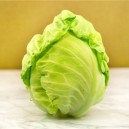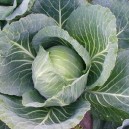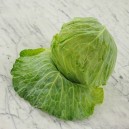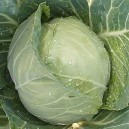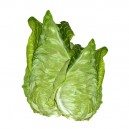
Welcome, Log in
Product Categories
-
Heirloom & OP Seed
- Cool Weather Crops
- Warm Weather Crops
- Beans
- Beetroot
- Brassicas
- Carrots
- Chard
- Corn/Maize
- Cucumbers
- Eggplant (Aubergine)
- Leeks
- Lettuce
- Melons
- Okra
- Onions
- Parsnips
- Peas
- Peppers & Chillies
- Radish
- Spinach
- Squash & Pumpkins
- Tomatoes
- Turnips
- Unusual / Exotic
- Herbs & Spices
- Fruits & Berries
- Value Packs
- View All Seed
- Gift Vouchers
CabbageThere are 5 products.
Please scroll down or click here to view the product list
GROWING INSTRUCTIONS FOR CABBAGE
Binomial Name: Brassica oleracea
Varieties: Brunswick, Copenhagen Market, Perfection Drumhead Savoy, Early Jersey Wakefield, Premium Late Flat Dutch, Mammoth Red Rock
Start: Seeds or seedlings
Germination: 4-7 days, 7°C to 30°C
Seed Life (viability): 5 years
Soil: Well drained and fertile
Sunlight: Full sun
Sow Seeds: 4 to 5 cm apart
Transplant Seedlings: 30 to 40 cm apart
Ave. Days to Harvest: 60 to 90
Good Companions: Beans, Beets, Chamomile, Chives, Cucumber, Dill, Endive, Hyssop, Leek, Lettuce, Mint, Nasturtium, Peas, Radish, Rhubarb, Rosemary, Sage, Spinach, Yarrow
Bad Companions: Oregano, Strawberry, Tomato
Sowing & Planting: This cool-season crop grows best when daytime temperatures are in the range of 15°C to 20°C. Direct-seed or transplant spring crops for fresh use in summer. Plant fall crops for winter storage or sauerkraut. Some green varieties have a bluish cast.Can tolerate light shade but will slow maturity. Light shade can be beneficial in warm weather.
For spring crops, sow seeds indoors in seedling trays 6 to 8 weeks before average last frost. Keep soil warm (about 24°C), until germination. Then keep plants around 15°C. Provide direct sun so plants don't get leggy. When plants are 4 to 6 weeks old, transplant into garden 30 to 60 cm apart in rows 45 to 80 cm apart. Use closer spacings for smaller, early varieties, wider spacings for larger, late-season varieties.
Can be direct seeded as soon as you can work the soil. Will germinate at soil temps as low as 5°C. Plant 1 to 2 cm deep, about 8 cm apart. When seedlings are 10 to 12 cm tall, thin or transplant to stand 30 to 60 cm apart.
Growing: Apply a good layer of compost again halfway through the season. Plants have shallow root systems though, so try and avoid even shallow cultivation. Mulch well to protect roots, reduce weed competition and conserve moisture.
Use floating row covers to help protect from early insect infestations. To help reduce disease, do not plant cabbages or other cole crops in the same location more than once every three or four years.
When heads are mature they are prone to splitting in response to any stress or a rain following a dry period. Avoid splitting by choosing varieties that resist splitting, spacing plants closer together (20 to 30 cm for early varieties, 30 to 40 cm for later varieties), using a shovel to sever roots on one side about 15 cm from the plant or by twisting the plants, after the heads have firmed, to break some of the roots.
Harvesting: Cabbage can be harvested anytime after the heads form. For highest yield, cut the cabbage heads when they are solid (firm to hand pressure) but before they crack or split. When heads are mature a sudden heavy rain may cause heads to crack or split wide open. The exposed internal tissue soon becomes unusable. Harvest and salvage split heads as soon as possible after they are discovered.
In addition to harvesting the mature heads of the cabbage, you can also harvest a later crop of small heads (cabbage sprouts). These sprouts develop on the stumps of the cut stems. Cut as close to the lower surface of the head as possible, leaving the loose outer leaves intact.
Buds that grow in the axils of these leaves (the angle between the base of the leaf and the stem above it) will later form sprouts. The sprouts develop to 5 to 10 cm in diameter and should be picked when firm. Continue control of cabbage worms and other pests. If this control cannot be maintained, remove and destroy or compost the stumps because they serve as a breeding ground for diseases and insect pests.
-
R 25.00Add to cart More Details
Available -
R 25.00Add to cart More Details
Available -
R 25.00Add to cart More Details
Available -
R 25.00Add to cart More Details
Available -
R 25.00Add to cart More Details
Available
